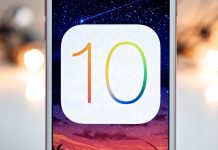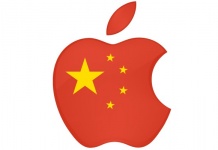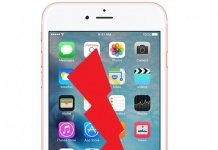 In a Bits article today Stone says:
In a Bits article today Stone says:
The 22 percent number means little because it doesn’t reflect the entire publishing industry. Most small publishers, along with one of the largest in the world – Random House – do not yet sell books through Apple. Amazon has always been particularly strong at selling lesser known books in the so-called “long tail” of publisher’s catalogs, many of which Apple does not yet carry. Alan Weiner, an analyst at Gartner, called the statistic a “voodoo algorithm” and said, “it’s an interesting number, but I don’t necessarily think there’s a lot of credibility in it.”


































Gartner, being an expert in “vodoo numbers” should at least track down what Jobs said. According to the *story* — not the headline but the story — linked below on Macworld.com, Jobs is reported to have indicated the following;
…”According to Jobs, users have downloaded more than 5 million books—approximately 2.5 for each device sold—in the first 65 days of iBooks’ availability. In addition, five of the six largest publishers have reported the app’s share of their electronic sale to be about 22 percent, which is rather impressive for an e-book reader that has been on the market for just over two months.” …
If reported accurately, he provides a very precise stat: 5-of-6 publishers provided numbers on “their” sales.
The fact that reporters have interpreted that (including the one writing the headline on that story) to mean the entire eBook market is not Apple’s voodoo, it’s a problem reporters have with understanding numbers.
http://www.macworld.com/article/151813/2010/06/ibooks.html?lsrc=twt_macworld
@Rex: Seems to me Jobs is still being disingenuous. The salient image is one of Jobs standing next to a slide that reads “22% of total ebook sales.” That was clearly intentional. He was trying to use that number and to have it be misreported. I’m not saying that overly-credulous journalists or those simply not paying enough attention should get off the hook, but the point still stands that when a CEO, particularly one so good at dishonest spin, provides a number, we all ought to look at it very carefully.
David, hell!… business is business, putting the best face on things is all in the same game — but what is really impressive are the actual figures and I am no iPad lover.
An average of 2.5 ebooks per iPad, considering all its other functions on it, means some considerable spending has been done by a minority of real readers — hence the remarkable 22% in sales for a handful of big publishers Apple has — is truely remarkable.
Lesson 1: people want more reading room in a portable device (that goes for GPS uses as well).
Lesson 2: Colour and movement are important, even if not reading — seeing that you are carrying around a light but bulky object.
Lesson 3: Put it together and the glossy Magazine should take off like a rocket, plus newspapers of course, but also non-fiction in general.
Lesson 4: Layout with such devices becomes increasingly important especially for the above — watch for the Blio eReader plus HTML5.
Lesson 6: Unlock the device from a sole distributor, give it a really good Pixel QI sreen, some open ports along with GPS and the rest — and we have a WeTab perhaps — then things begin to rock — especially with economic collapse only months away ; )
Greg,
Not quite a WeTab, since they “voluntarily” will be changing their name :-). Sure.
Re the average 2.5 ebooks per iPad downloaded in the first 65 days (preceded by half a year of frenzied media attention) and the notion of ‘considerable spending” on those books — remember that the iBook store has 60,000 books, 30,000 of which are *free* …
Now, when familes get a new iPad and are eager to try downloading a book, which type of book do you think will be the most likely first download?
Even the second download?
That’s without mentioning that from what most have seen of Kindle book buying, 2.5 downloaded books per iPad sold in 65 days is actually low. But, the e-book devices attract a different set of book buyers — one with a more intense focus on just reading.
Re the 22% share of the e-book market, from the Big5 at least, not only did Big Random House opt out of Apple Agency’s plan and bookstore, but Penguin (very large) did not make its newest and bestseller e-books available to Amazon for the past 1.5 months or so. Skewed numbers there too. The statement was clever enough so that headlines all over the Net are screaming 22% of the e-book market, with ‘the general’ implied.
Apple’s got a good product and has done well enough without needing even more hype.
But, as you point out, they’ve proved that people, at least 2 million so far, have been eager to get a quality item like this, even with missing basics like usb ports, memory card slots, and no real file-mgmt system (officially) except for iTunes and a specifically-registered computer to be used with it.
Some even wish it were flash-website capable, but that’s a taste. Others prefer blank rectangles or non-access.
Yes, there are workarounds for the missing stuff, but something like the Pixel Qi based tablet on a WeTab-like device will be interesting to see.
Magazines — Apple needs to think of pricing them lower than $5 per weekly issue.
As of April 2007, apple.com reported that Apple had sold its 100 millionth iPod, which was a bit over 5 years old at the time.
There’ll be another month when those who “just have to have” an iPad will be getting the recently released device. I see an average of 4 iPad commercials a night, which feel like stern hypnotic sessions. During the LOST finale, there must have been at least four for that one show.
I do wonder if they can expect those sales numbers after the first 3 months, in this economy, especially. In better times, I think they could.
And then there’s the factor of the coming loaded competitors, at lower prices.
How did I just know that people would see that number and the sales figures and start arguing them like they know what the “real” sales figures are despite the fact that Apple has not published the exact data they need in order to argue in any type of constructive way.
All I can say is that I hope Apple starts outselling Amazon so that Amazon will have to be more fair to publishers and authors. Amazon would cut deals where they would keep everything from 65 to 85% of the sell, and then they would control the selling price too! So authors would get between 15 to 35% At least Apple is offering deals to larger publishers where the publisher get 70%. Even independent authors can use services like Smashwords and get 60%. Amazon has been used to taking more of the profits than is really fair. So I am very glad Apple and Google and others are getting involved, and cutting authors a bigger slice of the pie. I think Google plans to keep around 35%. More than Apple, but still better than Amazon. I have the Kindle on my iPad too, but when I can I buy books through Apple’s store because I know more of the money goes to those involved with creating the work.
Tim,
Where do you get your numbers. Before the ‘Agency’ plan, Amazon paid book publishers (who then were able to pay their authors) -50%- of the publishers’ created list pricing. No matter how low the Amazon selling price for the book.
So, knowing how list pricing tends to be, figure out what they were getting then. Not what you say here.
Also, publishers said, Yes, they knew they’d be getting less! (and please note that means less for the authors), but they wanted “control” of the selling price AND to not let their hardcover books be “devalued” by the lower prices for the ebooks.
You may be mistaking the quoted 70% that Amazon is/was taking on SUBSCRIPTIONS – and I also have read some quotes attributed to ‘insiders’ who said Amazon’s 65-70% for periodicals included 33% to wireless providers, who are paid by Amazon, wireless being heavily used daily or several times a day in cases like The New York Times Latest News.
Andrys,
I cannot reveal all my sources because Amazon forces publishers and independent authors to sign confidentiality agreements on this stuff. Some of if then let themselves speak a little more freely than they should have when talking to me.
But here is one public article that makes it completely obvious that Amazon is not offering nearly as good of a deal to authors and publishers. This story is about one of the biggest publishers in the world trying to get Amazon to match Apple’s agreement. Amazon responded by yanking their books. If this is the way they respond to the big publishers, how do you think they are treating the little guys.
http://www.nytimes.com/2010/01/30/technology/30amazon.html
So people need to be cheering for Google, Apple, and others who are playing a more fair game with publishers and authors. It takes an incredible amount of work to create a quality book. For years now Amazon has been paying authors like they are tipping someone at a restaurant.
LOL. I just saw that article is by Brad Stone also. Hopefully I am not misunderstanding it. But when I read it I was reminded of all the conversations I had had with literary agents and publishers about Amazon percentages. So it seems to match up the information I already had. I am certainly open to being corrected. But I did also just talk to one independent author who has a top 100 seller on Amazon’s print side. He says he is not putting his other books on Amazon because he makes more money selling a much smaller volume on smaller sites.